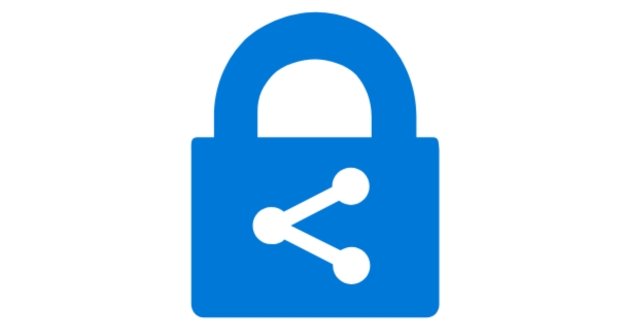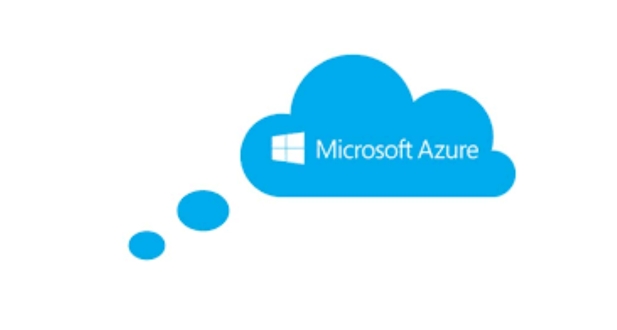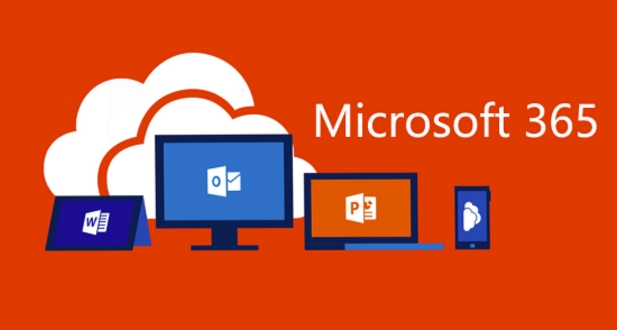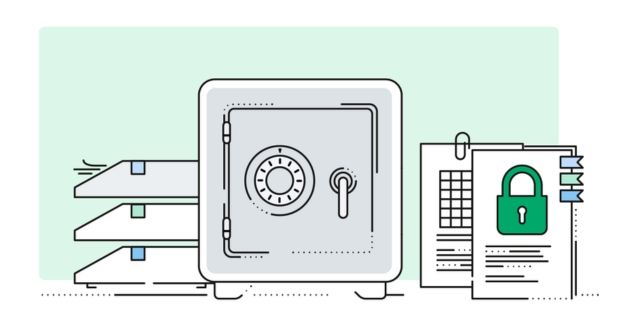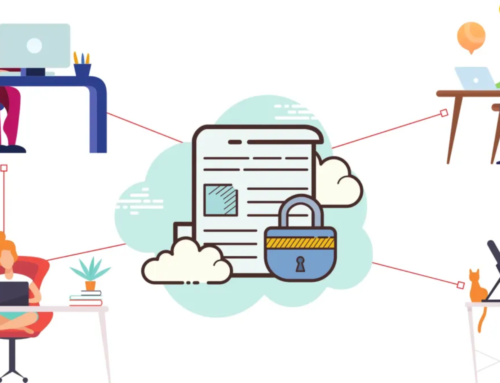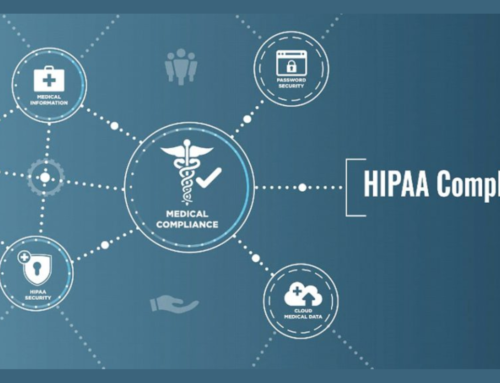Introduction to Azure Information Protection
Azure Information Protection stands as a robust and comprehensive solution dedicated to the critical task of safeguarding sensitive data within organizations. In an era where information is a valuable asset, protecting it from unauthorized access and ensuring its integrity has become paramount. This section delves into the core aspects of Azure Information Protection, defining its role, emphasizing data security, and addressing the critical factor of information sensitivity.
Defining Azure Information Protection
Azure Information Protection is Microsoft’s answer to the evolving challenges of data security in a digital landscape. At its essence, it’s a suite of tools and services designed to classify, label, and protect data, ensuring that sensitive information remains in the right hands and under the right conditions.
Comprehensive Data Security
The primary objective of Azure Information Protection is to fortify the security posture of organizations by offering a comprehensive set of tools. From the moment data is created to its sharing and storage, Azure Information Protection ensures a vigilant watch over it, safeguarding against potential threats and unauthorized access.
Emphasizing Information Sensitivity
The core philosophy of Azure Information Protection revolves around the understanding that not all data is created equal. It recognizes the varying degrees of sensitivity attached to different types of information within an organization. Whether it’s financial records, intellectual property, or personal identification details, Azure Information Protection tailors its security measures to match the specific sensitivity of each piece of data.
In the digital age, where information is a currency of its own, organizations need a robust solution that not only understands the nuances of data sensitivity but also actively works towards its preservation. Azure Information Protection stands as a sentinel, guarding against potential threats and empowering organizations to take control of their data security landscape. This introduction sets the stage for a deeper exploration into the features, benefits, and implementation strategies of this powerful solution.
Key Features of Azure Information Protection
Azure Information Protection unfolds a rich tapestry of features meticulously designed to empower organizations in their quest for data security and confidentiality. This section embarks on a comprehensive exploration of Azure Information Protection’s key features, dissecting the core elements that define its prowess in data classification, information labeling, encryption, and access control.
Data Classification: Understanding Your Data
At the heart of Azure Information Protection lies its robust data classification capabilities. This feature enables organizations to categorize data based on its content and context. By understanding the nature of the information it handles, the system lays the foundation for more targeted and effective security measures.
Information Labeling: Precision in Protection
Information labeling in Azure Information Protection is akin to providing a digital passport to each piece of data. Labels convey the sensitivity of information, dictating how it should be treated, who can access it, and under what circumstances. This precision ensures that security measures are not just applied broadly but are tailored to the unique characteristics of each data element.
Encryption: Fortifying Data Integrity
Encryption stands as an impenetrable shield in Azure Information Protection. It transforms data into unreadable code that can only be deciphered by authorized parties. This feature ensures that even if unauthorized access occurs, the information remains unintelligible and, therefore, secure.
Access Control: Managing Permissions
The access control feature dictates who gets the keys to the data vault. Azure Information Protection allows organizations to finely tune access permissions, ensuring that only those with a legitimate need can view or interact with sensitive information. This granular control over access adds an additional layer of defense against potential breaches.
In essence, Azure Information Protection’s key features are not merely checkboxes on a security list; they represent a sophisticated arsenal crafted to meet the dynamic challenges of modern data security. From understanding the nuances of data to applying precise security measures, Azure Information Protection stands as a sentinel, actively guarding against threats and enabling organizations to navigate the intricate landscape of data confidentiality with confidence.
Implementation Strategies
Implementing Azure Information Protection is not just a technical endeavor; it’s a strategic initiative that involves aligning technology with organizational goals and workflows. This section delineates practical approaches to ensure a smooth integration of Azure Information Protection within an organization, emphasizing considerations for seamless adoption into existing workflows.
Understanding Organizational Needs
Before embarking on the implementation journey, it’s crucial to conduct a comprehensive assessment of the organization’s needs. What are the specific data protection requirements? What are the primary workflows that handle sensitive information? Understanding these aspects lays the groundwork for tailoring Azure Information Protection to meet the organization’s unique challenges.
Aligning with Security Policies
Successful implementation involves harmonizing Azure Information Protection with existing security policies. This entails a thorough review of current policies and the identification of gaps that the solution can address. By aligning with established security protocols, the implementation becomes an organic extension of the organization’s overarching security strategy.
Customization for User Adoption
Users are at the forefront of any data protection initiative. Implementing strategies should include customization efforts that ensure user-friendly experiences. This involves configuring the system to align with user workflows, minimizing disruptions while enhancing the overall data protection posture.
Employee Training and Awareness
No implementation can be successful without adequate training and awareness initiatives. Educating employees on the importance of Azure Information Protection, how it aligns with data protection goals, and the role they play in ensuring its success is pivotal. This not only ensures a smooth transition but also cultivates a culture of security awareness.
Seamless Integration into Workflows
The true measure of implementation success is how seamlessly Azure Information Protection integrates into existing workflows. This involves a meticulous mapping of the solution’s features to specific workflow touchpoints. By ensuring that the solution is an enabler rather than a hindrance, organizations maximize its effectiveness.
Continuous Monitoring and Adaptation
The implementation journey doesn’t end with the initial setup. Continuous monitoring and adaptation are integral to success. Regularly assessing the system’s performance, gathering user feedback, and making necessary adjustments ensure that Azure Information Protection evolves in tandem with organizational needs.
In conclusion, effective implementation strategies for Azure Information Protection go beyond technical configurations; they encompass a holistic approach that considers organizational nuances, user experiences, and the dynamic nature of data protection. By aligning technology with people and processes, organizations can harness the full potential of Azure Information Protection in fortifying their data security posture.
Integration with Microsoft 365 (Approx. 600 words)
The seamless integration between Azure Information Protection and Microsoft 365 heralds a new era in data security and collaboration. This section delves into the symbiotic relationship between these two powerful solutions, showcasing how their synergy enhances collaboration, communication, and overall productivity within organizations.
Unified Ecosystem for Enhanced Collaboration
Azure Information Protection and Microsoft 365 operate in unison to create a unified ecosystem that fosters enhanced collaboration. By integrating robust data protection measures with the collaborative tools within Microsoft 365, organizations can confidently share sensitive information, knowing that it remains secure throughout its lifecycle.
Elevating Communication Security (Approx. 200 words)
Communication lies at the heart of organizational workflows. The integration ensures that emails, documents, and other communication channels within Microsoft 365 are fortified with the protective layers of Azure Information Protection. This not only secures sensitive data during transmission but also empowers users to communicate freely without compromising security.
Productivity Boost through Secure Workflows
Rather than hindering productivity, the integration between Azure Information Protection and Microsoft 365 acts as a catalyst for secure workflows. By embedding data protection measures directly into productivity tools like Word, Excel, and SharePoint, users can seamlessly create, collaborate, and share information without concerns about data compromise.
Automated Classification and Labeling
The integration introduces automation into the classification and labeling processes. As users create and handle data within Microsoft 365 applications, Azure Information Protection automatically applies relevant classifications and labels based on content and context. This not only streamlines the workflow but ensures consistent and accurate data protection.
Enhanced Control Over Access and Permissions
Microsoft 365 integration extends Azure Information Protection’s control over access and permissions. Organizations can define and enforce policies that govern who can access specific data and under what conditions, providing granular control without compromising the collaborative nature of Microsoft 365.
In essence, the integration between Azure Information Protection and Microsoft 365 represents a harmonious marriage of security and productivity. It’s a testament to the evolving landscape of data protection, where robust security measures are not impediments but enablers of seamless collaboration and communication. As organizations leverage the combined power of these solutions, they pave the way for a future where data security is synonymous with productivity and innovation.
Security Benefits of Azure Information Protection
Azure Information Protection stands as a sentinel, fortifying organizations against a myriad of security threats while offering a robust set of features that extend beyond conventional data protection measures. This section delves into the manifold security benefits that organizations reap by embracing Azure Information Protection, addressing critical aspects such as threat mitigation, compliance, and data loss prevention.
Holistic Threat Mitigation
Azure Information Protection takes a holistic approach to threat mitigation. By comprehensively classifying and labeling data, the solution creates a proactive defense mechanism. It goes beyond reactive measures, actively identifying potential threats and vulnerabilities before they manifest. Whether it’s detecting anomalous user behavior or thwarting phishing attempts, Azure Information Protection forms a formidable barrier against diverse threats.
Strategic Compliance Adherence
The security landscape is intrinsically tied to regulatory compliance. Azure Information Protection is designed with compliance in mind, offering organizations a strategic framework to adhere to industry-specific regulations. Whether it’s GDPR, HIPAA, or other data protection standards, the solution provides tools and features that facilitate compliance adherence, ensuring that data handling practices align with the intricacies of relevant regulations.
Comprehensive Data Loss Prevention
Data loss prevention is a paramount concern for organizations handling sensitive information. Azure Information Protection addresses this concern comprehensively. Through robust encryption, access controls, and intelligent monitoring, the solution creates a safeguard against accidental or malicious data leaks. It empowers organizations to define and enforce policies that prevent unauthorized data sharing, bolstering the overall data loss prevention strategy.
Real-time Monitoring and Reporting
Azure Information Protection introduces real-time monitoring and reporting capabilities, providing organizations with a dynamic view of their security landscape. From monitoring user activities to generating insightful reports on data usage patterns, the solution ensures that security teams have the tools needed to stay ahead of potential security incidents.
Adaptive Security Measures
Security is not a one-size-fits-all proposition. Azure Information Protection acknowledges this by offering adaptive security measures. The solution continuously learns from user interactions and adjusts security protocols accordingly. This adaptability ensures that security measures evolve alongside emerging threats, providing organizations with a proactive defense mechanism.
In essence, the security benefits of Azure Information Protection extend far beyond traditional data protection. By embracing a holistic approach to threat mitigation, ensuring compliance adherence, implementing comprehensive data loss prevention measures, and offering real-time monitoring, the solution stands as a formidable guardian of organizational data. As security challenges evolve, Azure Information Protection remains at the forefront, equipping organizations with the tools needed to navigate the intricate landscape of modern cybersecurity.
Best Practices for Effective Data Protection
Ensuring robust data protection goes beyond implementing powerful tools; it requires a proactive and comprehensive strategy. This section outlines best practices aimed at maximizing the effectiveness of data protection initiatives, covering key areas such as user training, policy enforcement, and continuous monitoring.
Prioritize User Training and Awareness
The foundation of effective data protection lies in informed and vigilant users. Investing in comprehensive user training programs ensures that individuals within the organization understand the importance of data security, recognize potential threats, and are equipped to follow best practices. Regular awareness campaigns and training sessions foster a culture of security consciousness, making users integral contributors to the overall data protection strategy.
Enforce Clear and Concise Data Protection Policies
Policies serve as the guiding principles that shape data protection efforts. Ensure that data protection policies are not just comprehensive but also clear and concise. Clearly articulate expectations regarding data handling, sharing, and storage. Regularly review and update policies to align with evolving security landscapes and industry regulations. Enforcing these policies uniformly across the organization creates a standardized and resilient data protection framework.
Implement Multi-Layered Authentication
Authentication is a pivotal aspect of data protection. Implement multi-layered authentication mechanisms to add an extra layer of security beyond passwords. This could include biometric verification, two-factor authentication, or adaptive authentication based on user behavior. By diversifying authentication methods, organizations bolster their defenses against unauthorized access.
Regularly Update and Patch Systems
Outdated systems and software are vulnerable points in any security infrastructure. Regularly update and patch systems to address known vulnerabilities and reinforce security measures. Automated patching systems can streamline this process, ensuring that the organization stays protected against emerging threats.
Incorporate Encryption Across Data Lifecycles (Approx. 150 words)
Encryption is a powerful tool for safeguarding data, and its implementation should span the entire data lifecycle. From data creation to storage and transmission, incorporating encryption ensures that sensitive information remains confidential and secure. This proactive approach minimizes the risk of data breaches and unauthorized access.
Establish Continuous Monitoring and Incident Response
Continuous monitoring is a cornerstone of effective data protection. Implement tools and processes that provide real-time insights into data usage patterns, user activities, and potential security incidents. Pair this with a robust incident response plan that outlines swift and decisive actions in the event of a security breach. Proactive monitoring and responsive incident handling are essential components of a resilient data protection strategy.
In conclusion, effective data protection is a multifaceted endeavor that demands a combination of technological measures, user awareness, and strategic policies. By prioritizing user training, enforcing clear policies, implementing multi-layered authentication, regularly updating systems, incorporating encryption, and establishing continuous monitoring and incident response capabilities, organizations can create a robust defense against evolving cybersecurity threats.
Use Cases and Real-World Examples
This section brings the theoretical prowess of Azure Information Protection into the realm of practicality by showcasing real-world use cases across diverse industries. By delving into specific scenarios, readers gain insights into how organizations leverage Azure Information Protection to address unique challenges, fortify their data security, and streamline operations.
Healthcare: Ensuring Patient Data Confidentiality
In the healthcare sector, patient data confidentiality is paramount. Azure Information Protection enables healthcare organizations to classify, label, and encrypt sensitive medical records. This ensures that patient information remains secure throughout its lifecycle, from creation to sharing among authorized personnel, contributing to compliance with healthcare data protection regulations.
Finance: Safeguarding Financial Transactions
Financial institutions deal with a vast array of sensitive information, from transaction records to customer financial data. Azure Information Protection plays a pivotal role in safeguarding this data. By classifying and encrypting financial documents, organizations can ensure that critical information is protected against unauthorized access, bolstering trust and compliance within the highly regulated financial sector.
Manufacturing: Protecting Intellectual Property
Manufacturing companies often grapple with protecting intellectual property and sensitive design documents. Azure Information Protection assists in safeguarding these assets by classifying and encrypting critical files. This ensures that only authorized individuals within the organization have access to proprietary information, mitigating the risk of data theft or industrial espionage.
Legal: Client Confidentiality and Compliance
Legal firms handle vast volumes of confidential client information. Azure Information Protection helps maintain client confidentiality by applying robust data protection measures. This not only ensures compliance with legal industry regulations but also fosters trust among clients who rely on legal professionals to safeguard sensitive legal documents.
Education: Securing Student Records (Approx. 200 words)
Educational institutions manage a trove of student records containing sensitive personal information. Azure Information Protection facilitates the secure handling of these records by classifying and encrypting them. This not only ensures compliance with educational data protection standards but also builds trust among students and their families regarding the institution’s commitment to data security.
By exploring these diverse use cases, readers gain a nuanced understanding of how Azure Information Protection transcends industry boundaries, adapting its capabilities to the unique challenges faced by healthcare, finance, manufacturing, legal, and educational sectors. These real-world examples underscore the solution’s versatility and its ability to cater to the specific data protection needs of organizations across different industries.
Future Trends and Evolving Features
As technology continues to advance, the landscape of data protection and information security is poised for dynamic changes. This section delves into the anticipated future trends and evolving features within Azure Information Protection, providing readers with insights into how the solution is likely to adapt to emerging challenges and advancements.
Integration with AI and Machine Learning
The future of Azure Information Protection is likely to witness deeper integration with artificial intelligence (AI) and machine learning (ML). These technologies can enhance the solution’s ability to automatically classify and label sensitive information, adapt to evolving data patterns, and even predict potential security threats. This evolution aligns with the broader industry trend of leveraging AI for proactive and intelligent data protection.
Enhanced Collaboration Security
Collaboration is central to modern workplaces, and future iterations of Azure Information Protection are expected to place an increased emphasis on securing collaborative environments. This may involve more granular control over document access during collaborative efforts, ensuring that sensitive information remains protected even in shared spaces within the organization or during external collaborations.
Extended Cloud Integration
With the ongoing shift towards cloud-centric workflows, Azure Information Protection is likely to further extend its integration with cloud services. This includes seamless collaboration with other Microsoft 365 applications, as well as compatibility with a broader spectrum of cloud storage and sharing platforms. The goal is to provide users with a unified and comprehensive data protection experience across various cloud environments.
Adaptive Security Policies
Future iterations of Azure Information Protection may introduce adaptive security policies that dynamically adjust based on contextual factors. This could involve the ability to automatically apply more stringent data protection measures in response to specific conditions, such as heightened security threats or changes in user behavior. Adaptive policies ensure that data protection measures remain agile and responsive to evolving cybersecurity landscapes.
Greater Focus on User Experience
Recognizing the importance of user experience in effective data protection, future updates to Azure Information Protection may prioritize a more user-friendly interface. This includes intuitive classification and labeling processes, simplified policy management, and enhanced user education features. By fostering a positive user experience, organizations can encourage better compliance with data protection measures.
Blockchain Integration for Immutable Records
As organizations seek immutable and tamper-proof records, future trends may involve exploring blockchain integration within Azure Information Protection. This could provide an additional layer of assurance regarding the integrity and authenticity of sensitive documents, especially in sectors where maintaining an indisputable record is crucial.
Continuous Monitoring and Analytics
The future evolution of Azure Information Protection may include more robust continuous monitoring capabilities and advanced analytics. This facilitates real-time insights into data usage patterns, user behaviors, and potential security incidents. By leveraging analytics, organizations can proactively address emerging threats and continuously optimize their data protection strategies.
In conclusion, the future of Azure Information Protection is marked by a commitment to innovation and adaptation. Anticipated trends include deeper integration with AI and machine learning, enhanced collaboration security, extended cloud integration, adaptive security policies, a greater focus on user experience, blockchain integration for immutable records, and continuous monitoring with advanced analytics. These trends collectively contribute to Azure Information Protection’s evolution as a dynamic and future-ready solution in the ever-evolving landscape of data protection and information security.
Conclusion
In conclusion, Azure Information Protection stands at the forefront of safeguarding sensitive data in the digital era. Through its robust features, seamless integration with Microsoft 365, and adaptability to diverse industries, Azure Information Protection addresses the evolving challenges of data protection and information security.
Throughout this comprehensive exploration, we’ve uncovered the fundamental aspects of Azure Information Protection, from its introduction and key features to practical implementation strategies. We’ve delved into its integration with Microsoft 365, discussed the security benefits it offers, and provided best practices for effective data protection. Real-world examples illustrated how organizations in healthcare, finance, manufacturing, legal, and education leverage Azure Information Protection to secure their valuable data.
Looking ahead, the future trends and evolving features anticipate a more intelligent, collaborative, and user-friendly data protection environment. The integration with AI and machine learning promises automated and adaptive data protection measures, while enhanced collaboration security ensures the safe exchange of information in shared spaces. Extended cloud integration aligns with the ongoing shift towards cloud-centric workflows, and adaptive security policies dynamically respond to changing security landscapes.
A key focus on user experience aims to make data protection more intuitive and accessible, fostering better compliance. Blockchain integration offers immutable records, and continuous monitoring with advanced analytics enhances real-time insights into data usage patterns and security incidents.
As organizations embrace Azure Information Protection, they empower themselves with a solution that not only meets their current data protection needs but also evolves alongside the technological landscape. The synergy of advanced features, real-world applicability, and anticipation of future trends positions Azure Information Protection as a cornerstone in the ongoing quest for secure and efficient data management.
In the journey towards a digitally resilient future, Azure Information Protection stands as a trusted ally, ensuring that organizations can navigate the complexities of data protection with confidence, adaptability, and a commitment to securing their most valuable asset – information.
